In mid-October, the day after the RMAF 2010 at Denver's Marriot Tech Center Hotel, my wife, Lynn, and I were treated to a tour of the YG Acoustics factory, which happens to be located in Arvada, CO. On a sunny Monday morning, we piled into a car with Dick Diamond, the director of sales and marketing, and pulled up a mere half hour later at an industrial building, the ordinariness of whose façade made an excellent foil to the eye-popping, high-tech manufacturing going on inside.
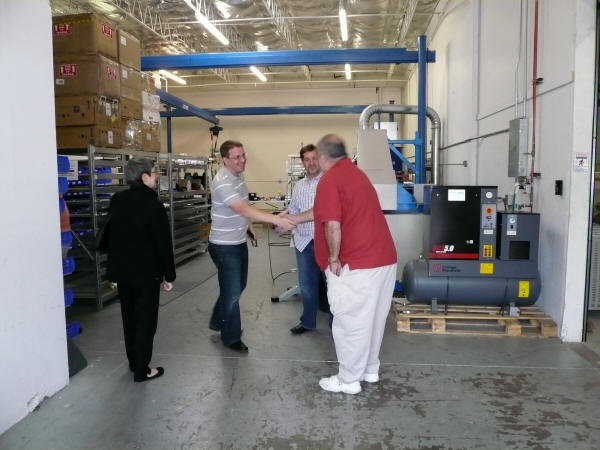
Lynn, Yoav, Dick Diamond, and Joe Kubala
First the introductions... That's Lynn, on the left; then Yoav Geva, the president; Dick Diamond; and Joe Kubala (the cable guy). Not shown, but also present was Bill Parish of GTT Audio.
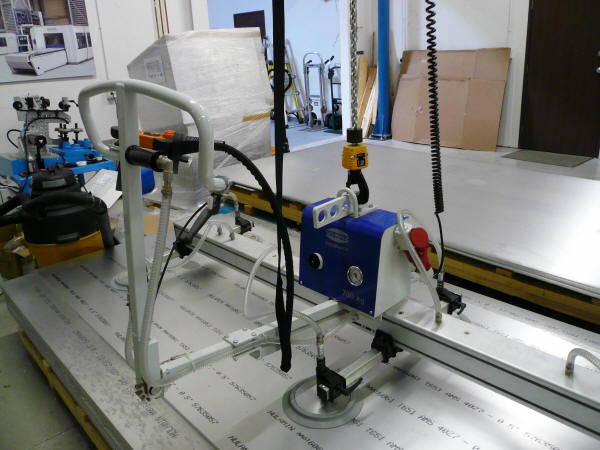
Overhead crane for lifting aluminum slabs
YG is one of a handful of speaker manufacturers using aluminum cabinets. Cabinet parts are machined from a solid billet of metal, not extruded or tooled. Slabs of aviation-grade, heat-tempered aluminum are hoisted by this crane and positioned on the CNC mill table.
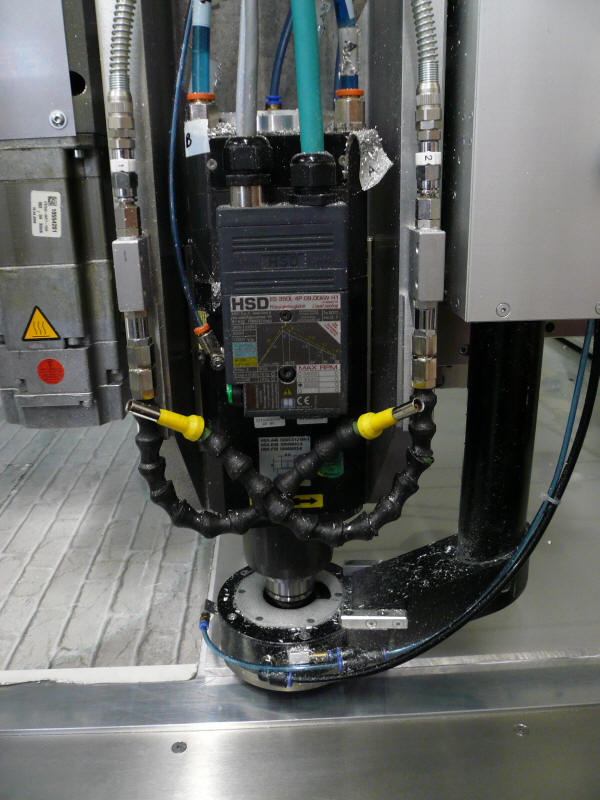
The CNC mill in action
The slab is held on the table by air suction. Once the machine operator selects the specific program—are you making cabinet parts or driver cones today?—the CNC mill goes into action, methodically positioning itself at different points, selecting milling tools, drilling speeds, etc, as it traverses the slab, all without further human intervention. The whole process is computerized.
The photo shows the Portatec mill drilling a screw hole . This mill is one of the few that can operate at speeds up to 32,000 RPM . When drilling aluminum there are no sparks or fireworks like you would have with stainless steel.
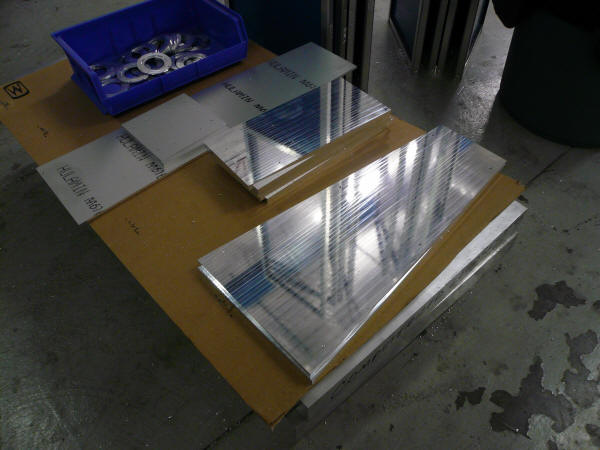
Aluminum cabinet parts
Here are some raw cabinet parts. You'd be surprised at their weight—not as heavy as steel, but much heavier than wood or mdf.
This grade of aluminum is superior to wood, mdf, composite materials and all the other likely metals for this purpose, in YG's opinion. It has the highest stiffness to mass ratio; it can be machined to the tightest tolerances; it is non-magnetic; it is less resonant.
.JPG)
CNC polishing robot
The machined parts are precision-ground on this Kuhlmeyer CNC polishing robot to apply the finish and harden the surface of the material.
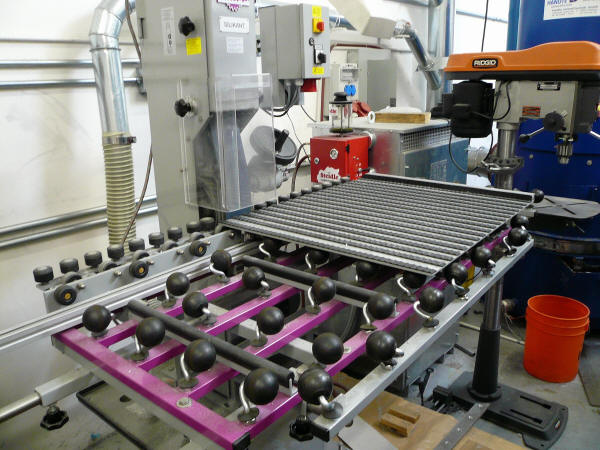
Aluminum grinding/polishing machine
This manually operated machine from Knopp grinds and polishes the edges of the aluminum plates.
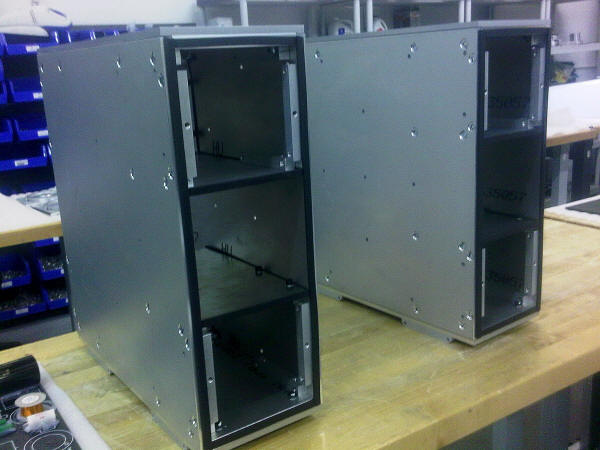
Double walled enclosures
Cabinet walls are double layers of metal . Different thicknesses are used for different sections of the enclosure. Furthermore, YG found ways to configure the cabi net so that internal resonances and standing waves are reduced without the use of stuffing. You won't find any stuffing in the enclosure, but you will find pinpoint anti-resonance technology. They call this FocusedElimination™ cabinet design.
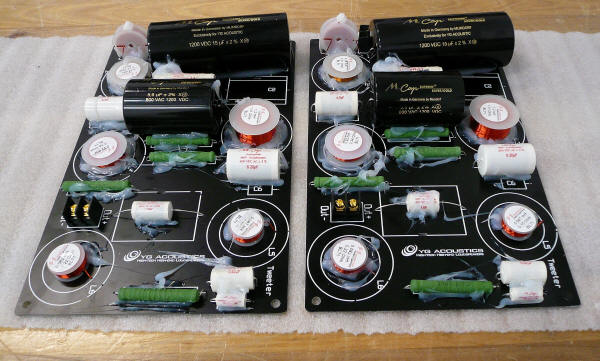
Tweeter crossover
This photo shows a tweeter crossover before it has been cleaned up and prepared for testing. Look closely at the board: the circuit parts are the best available, including expensive Mundorf silver/gold capacitors. Each component is soldered and held in place in a variety of fashions. The silicon gel on the board gives a secure hold down while preventing vibration of the part.
These crossovers are designed in-house using proprietary software and YG considers them their single most significant breakthrough. Other manufacturers use off-the-shelf crossovers that are optimized to give either flat response or phase coherency—none can do both and the speaker designer has to choose between them. The YG crossover alone is optimized in both domains. YG calls this crossover modeling software DualCoherent™.
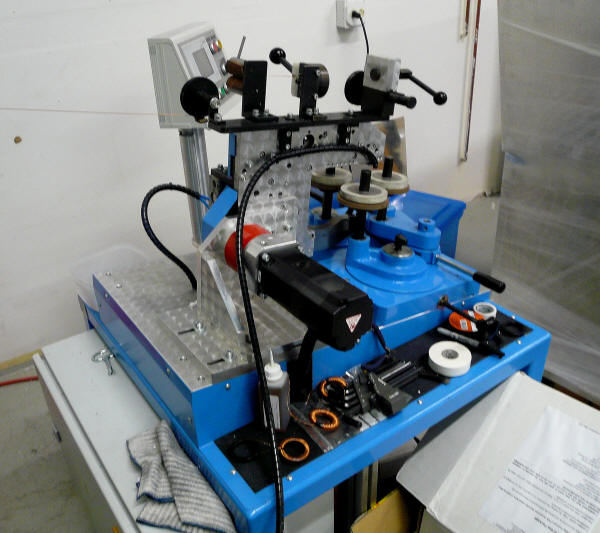
Coil winding machine
This machine is dedicated to the winding of toroidal air core inductors. (The copper rings at the bottom of the photo.) YG rolls their own using copper wire wound around a plastic ring, where the center is hollow like a donut. The typical air core inductor used in crossovers wraps wire only on the outside, like thread around a bobbin. YG claims this ToroAir ™ inductor has less signal contamination than standard ones. This is new in the Series III crossovers.
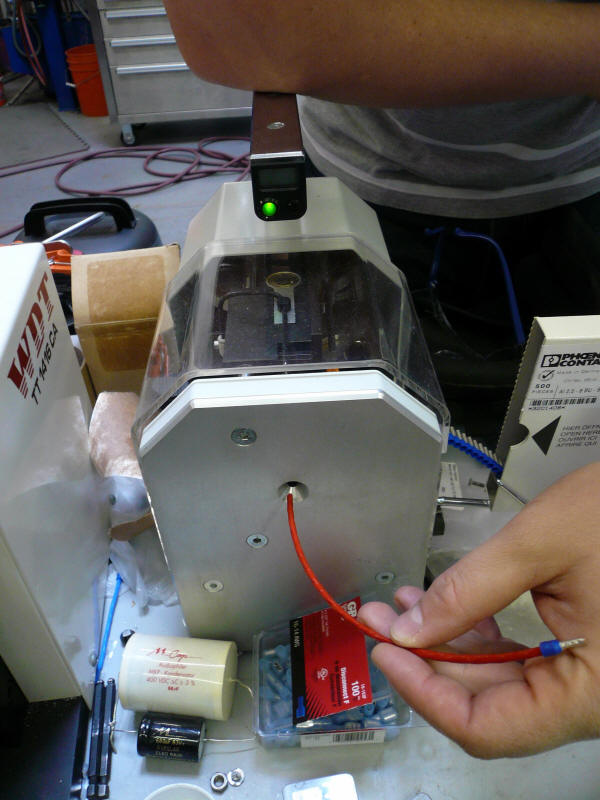
Wire termination machine: before above and after below
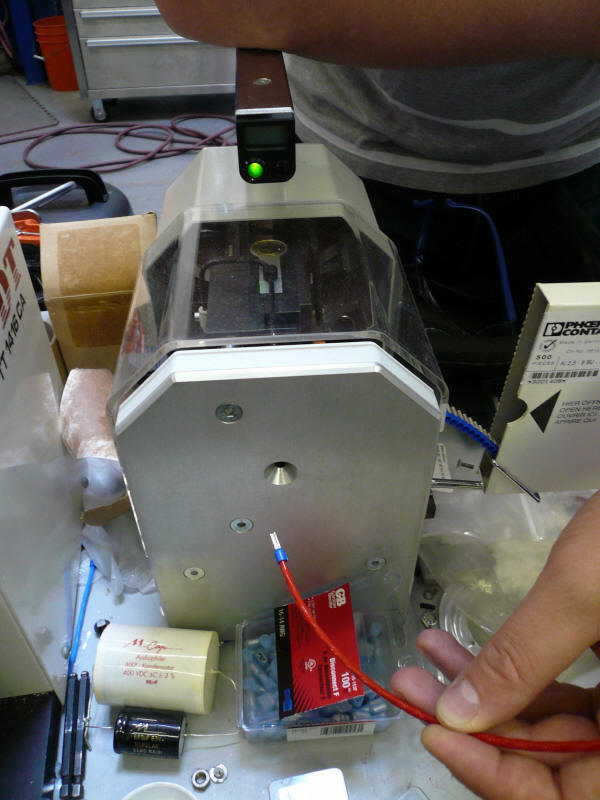
This is a press dedicated to terminating wire. That's all it does. If you cannot accept less than a perfect termination, purchase this $10,000 machine. You slip the cut wire end in, the press applies 2-tons of pressure, and out comes an oxygen-free termination that'll stay that way for good. Every other means of termination will let the metal oxidize over time. YG figures it'll pay for itself, eventually.
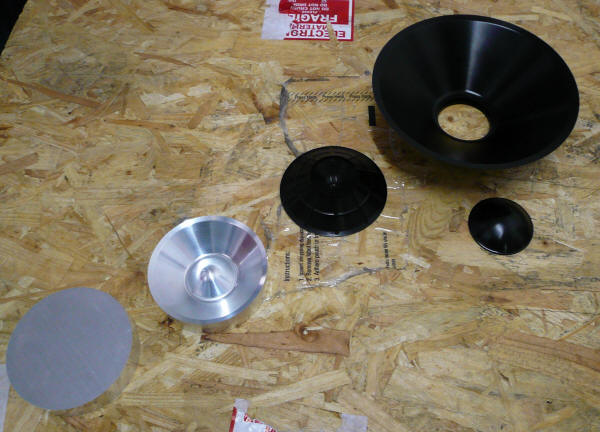
Milling the driver cone
If you've been impressed thus far, better hold onto your hat, because now we're coming to the truly far-out, space-age stuff. The big change, big enough to warrant the Series III designation on its own, is the new mid and bass driver cones.
This photo shows the evolution of a driver cone. The lower left object is how a midrange cone starts out, as a solid billet of aluminum. The CNC mill carves out the front (second object). The third object shows the carved out backside of a black anodized midrange cone. The spider ribbing is milled into it—not added afterwards. The next object is a finished woofer cone—same thing, just larger. And below it is a screw-in dust cap, manufactured in the same way.
98% of the 16lb block goes into the recycle bin and a 0.008" shell is left, which will become a midrange cone. A Series III woofer cone is 0.01 " thick. It takes a day to carve out a woofer cone like this on the CNC machine. Four mids can be made
With a full production schedule, ten to twenty-five pairs of speakers a month are churned out, depending on whether it's an Anat Reference III Professional or Carmel being manufactured—not a lot considering the size of the factory floor (10,000 square foot) and the five dedicated factory workers. (There are another five employees on the administrative side.)
Why go through all this trouble? When asked the question, Yoav showed us electron microscope photos of different conventional cone surfaces—they all have ridges, fissures or other surface irregularities. Theoretically, this should introduce distortion. This elaborate process of machining speaker cones from solid billet is called BilletCore™. It is the only way to produce a cone with a perfect surface.
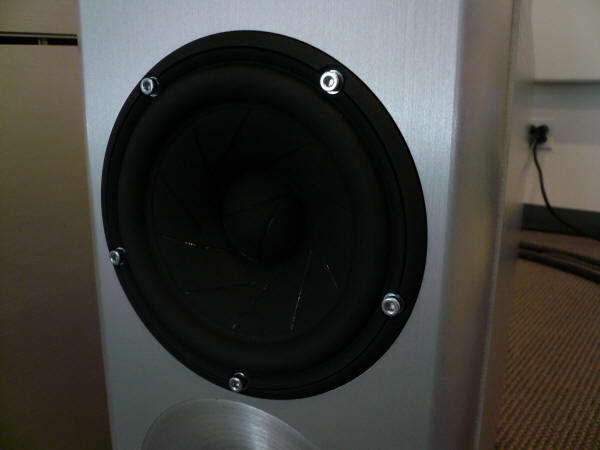
Old mid driver cone
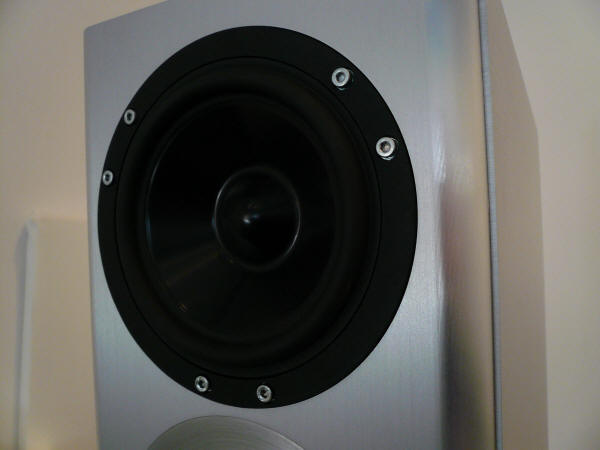
New mid cone
On the left is the old Series II impregnated paper cone midrange driver. On the right is the Series III aluminum cone replacement.
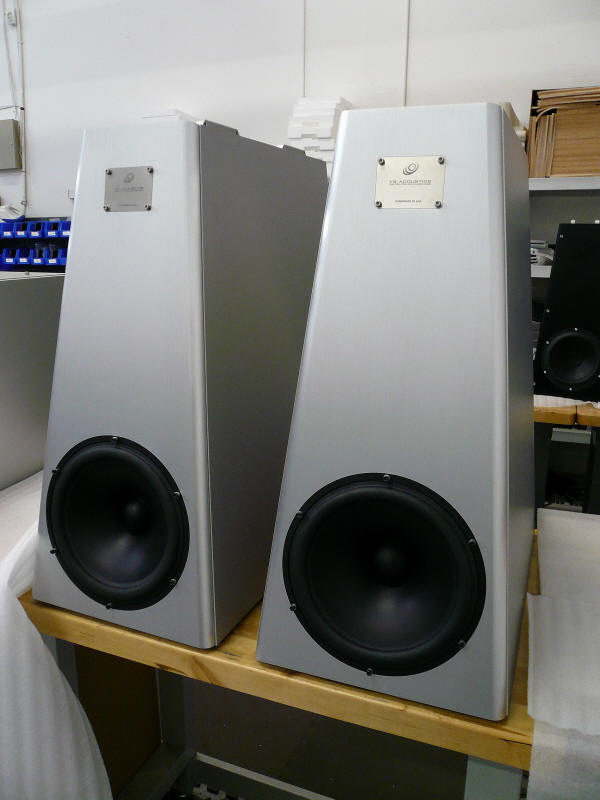
Current woofer modules
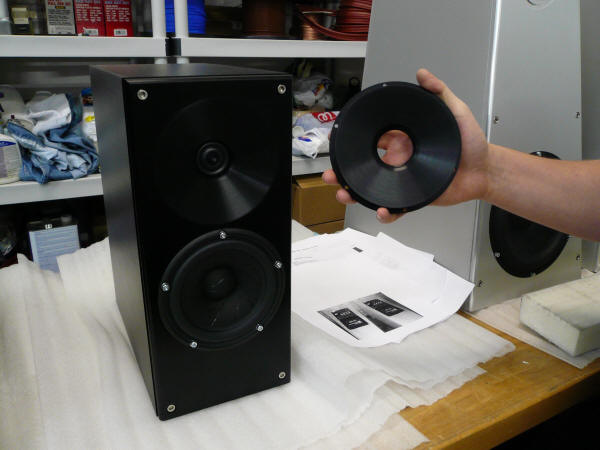
Tweeter wave-guide
This circular piece of aluminum holds the tweeter. Again, it is milled from an aluminum block to fit the exact dimension of the tweeter cutout on the baffle.
Now it gets interesting. How do you attach this tweeter wave-guide to the baffle? Most manufacturers use screws, but YG claims screws on the face of the baffle introduce measurable diffraction patterns. So, screws are out.
The solution: Freeze the tweeter wave-guide to -30 degrees Fahrenheit to shrink it. While still chilled, it is fitted into the opening on the baffle. When it warms up it expands to form a tight seal with the baffle opening. No glue or screws are used on the outside! (Note: screws are used on the inside to secure it to the baffle.)
The tweeter itself utilizes a Scanspeak Illuminator motor design that undergoes extensive re-machining of the magnet/motor system at the YG factory, a process they call ForgeCore™. This is another new feature in the Series III.
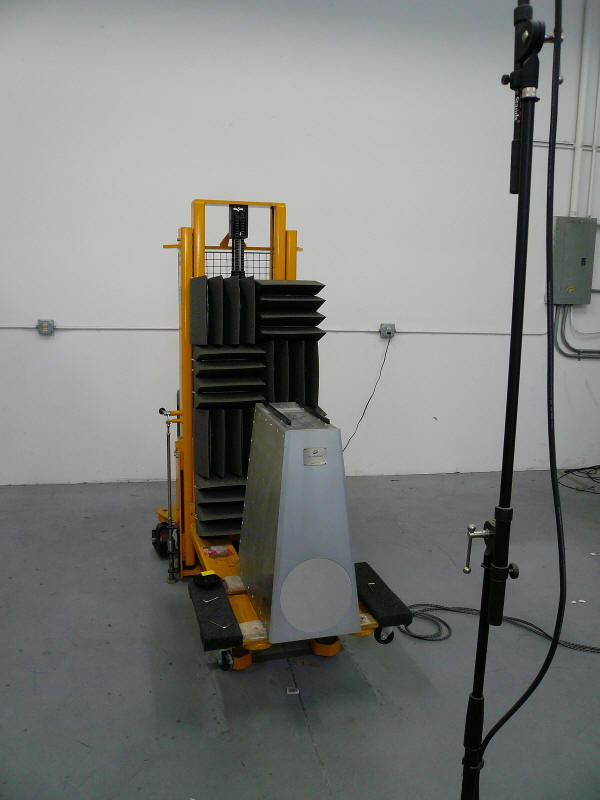
Speaker measurement rig
That's an Anat Studio woofer in front of a microphone. Before leaving the factory, every Anat Main Module of midrange drivers and tweeter is placed on this woofer and fed test signals, which are recorded by the microphone in this dedicated setup. The parameters of every Main Module are kept on file for reference.
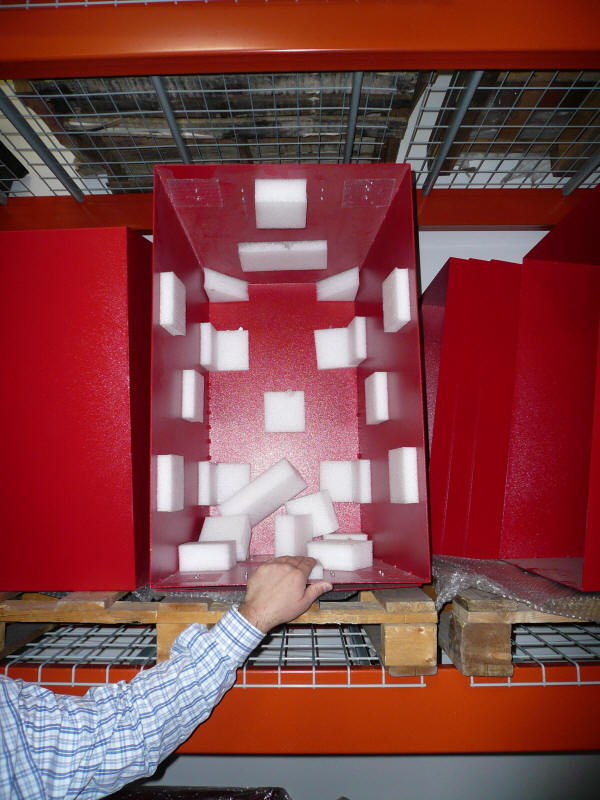
The inside of an aluminum shipping container
The finished units are packed in these red, laser-cut aluminum cases. Speakers shipped in wooden crates have a small chance of being damaged—too great a risk for YG.
The entire production area is a "clean-room" environment. All of the particles produced in the milling process are removed from the air and dumped into a sludge bucket by a wet dust collector.
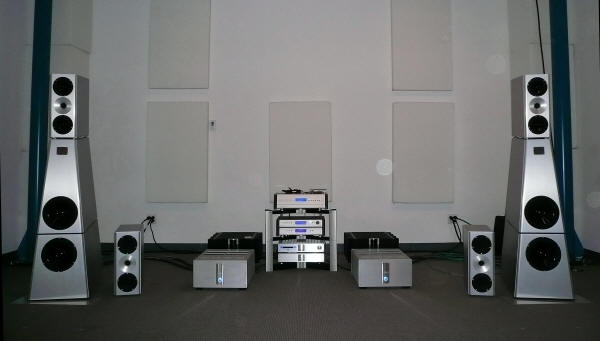
YG's listening room
We finished the tour with a listening session in the cavernous factory soundroom. The system consisted of a dCS Scarlatti front-end, Krell amplification, Kimber wires and YG Anat III Professional speakers. We listened to a few of their reference recordings, standard demo fare selected to elicit the wow reaction for scale and power, which it certainly did . I was bold and asked if I could hear a solo violin track from my own CD, prefacing the request with, "Given this huge space, I don't know how it'll sound." Dick said, "Sure!"
What struck me was the warmth and smoothness of the frequency response. It was full range and seamless and reminded me of single driver Lowther speakers. The tweeters were gone, completely integrated as a sound source. Ditto for the powered subs. If this is what the elimination of tiny fissures in driver cones, the removal of screws on baffles, perfectly flat frequency response and phase coherency sounds like, then it's well worth the effort.
I made a point of mentioning several equipment suppliers by name in the copy above because they read like a who's who of the world's best. Several of these machines are custom spec'ed to first-ever tolerances and functionality.
We left with our heads spinning. There was so much to absorb. So much of what we saw belonged in a NASA laboratory, not what you'd expect to find in a high-end speaker assembly plant.
Source